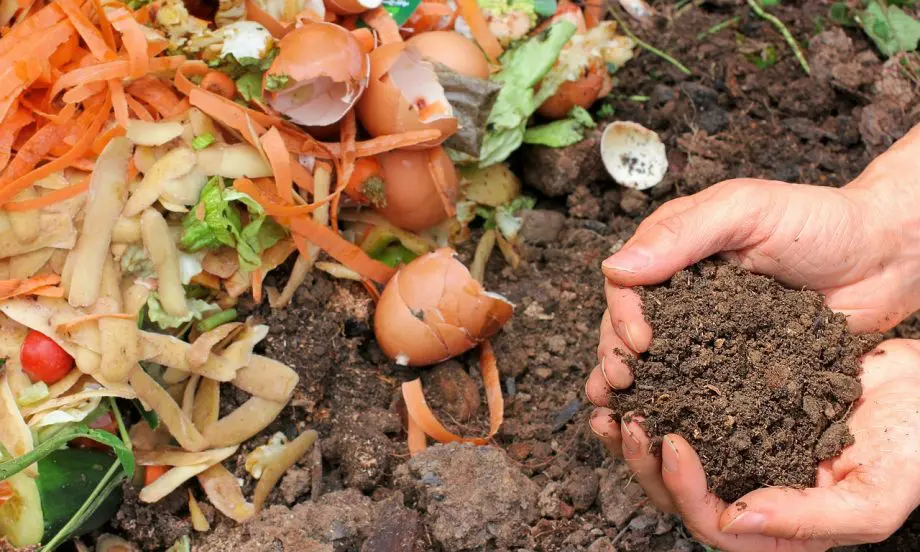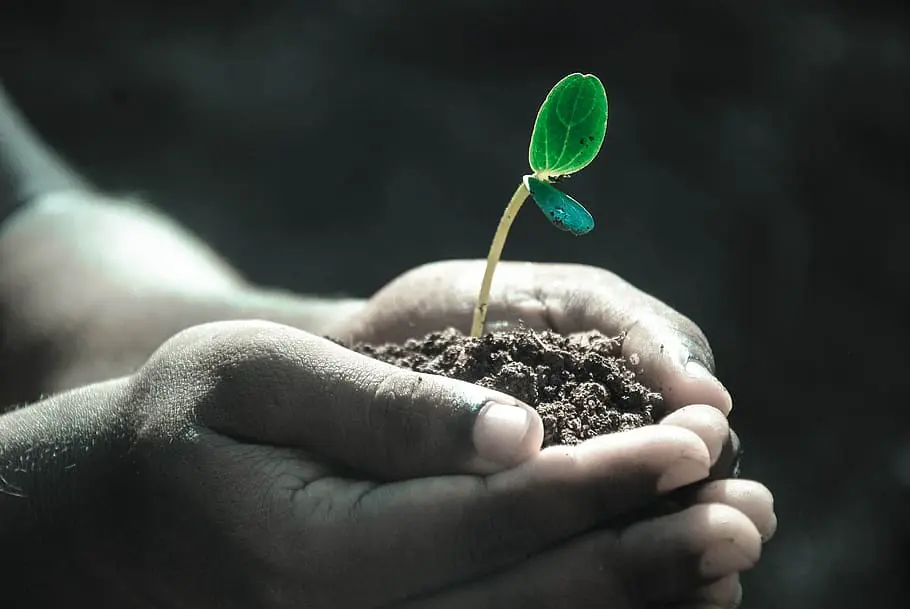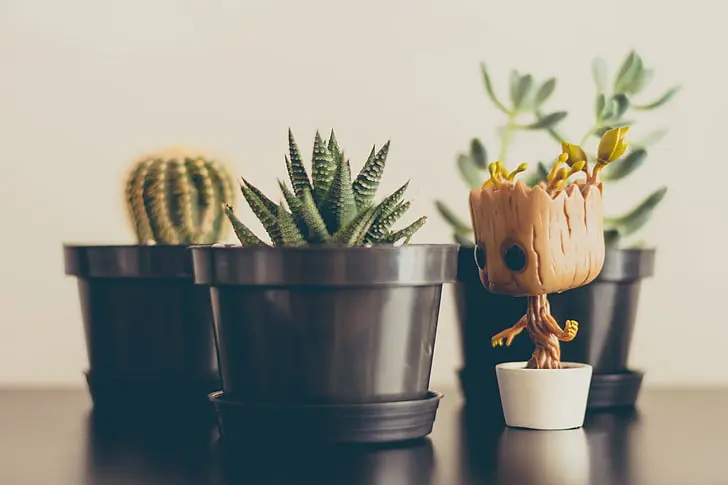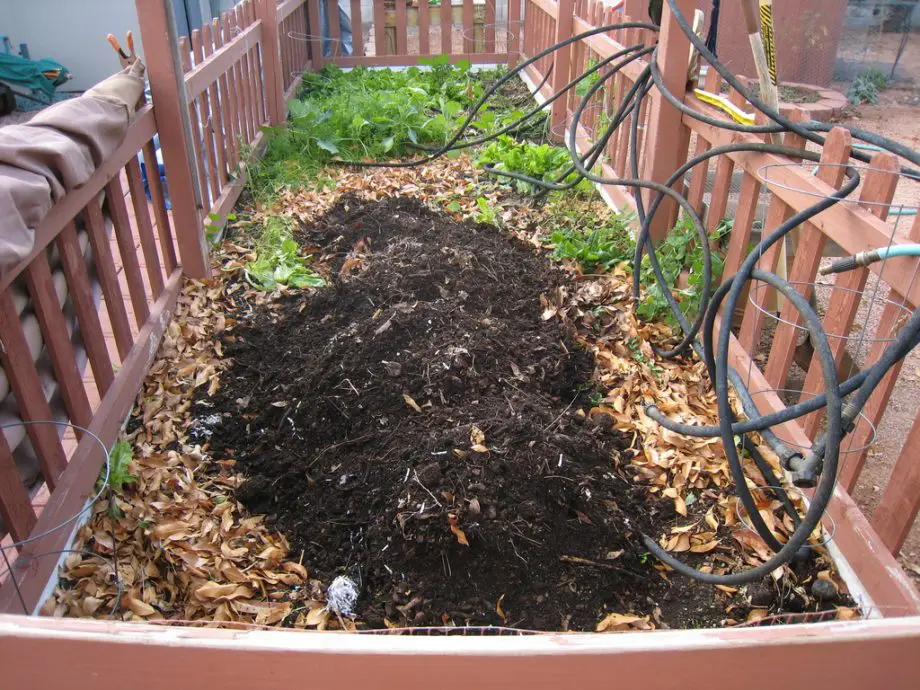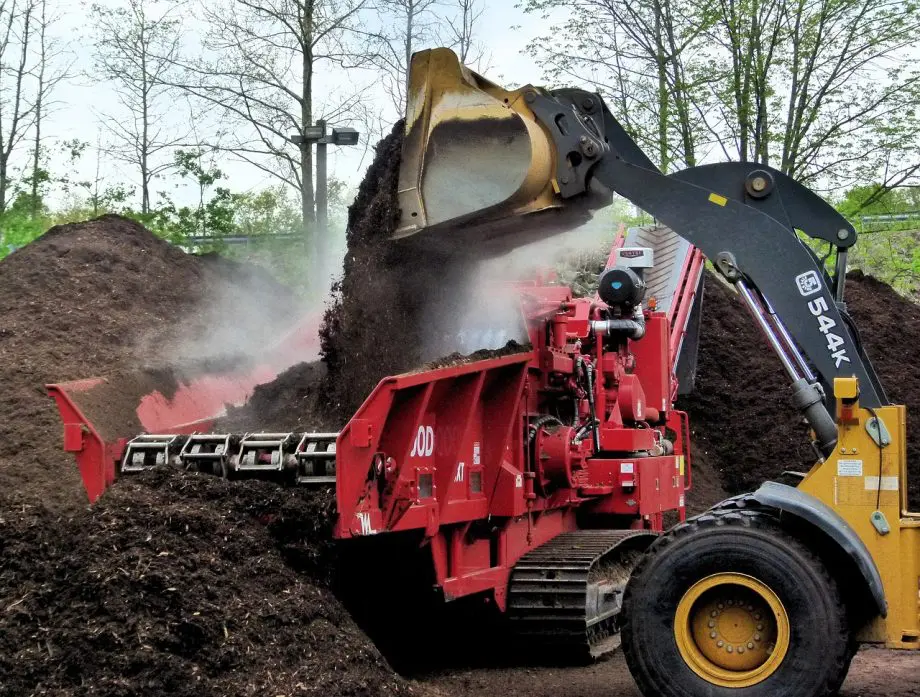
Discover the magic of using compost in container gardens! Dive into organic methods that boost plant growth and enrich your garden soil.
Diving into the world of gardening can be both thrilling and a tad overwhelming, especially when you’re trying to get everything just right.
But here’s a little secret to supercharge your green haven: using compost in container gardens.
It’s like giving your plants a gourmet meal they didn’t know they were craving!
Whether you’re a seasoned gardener or just getting your hands dirty for the first time, this game-changer will make your container plants thrive like never before. Let’s dig in!
Using Compost in Container Gardens
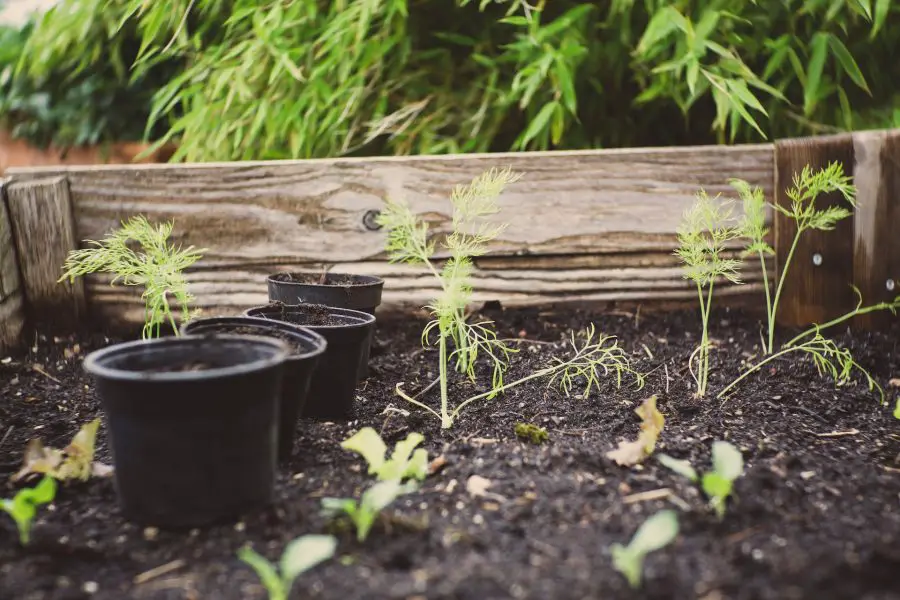
Ever wondered how to give your container plants that extra oomph? Well, you’re in for a treat.
In this post, we’ll delve deep into the world of Using Compost in Container Gardens.
From the nitty-gritty science behind composting to its myriad benefits and even some handy FAQs, we’ve got you covered.
So, if you’re curious about how compost can elevate your container gardening game or just looking for some pro tips, stick around. Let’s embark on this green journey together!
Definition of composting
Hey, let’s start with the basics, shall we? Composting, at its core, is like nature’s very own recycling program.
Imagine all those kitchen scraps, fallen leaves, and even those coffee grounds you toss out every morning.
Instead of letting them go to waste, composting transforms these organic materials into a rich, earthy substance that plants absolutely adore.
It’s a process where microorganisms, like bacteria and fungi, break down organic matter in the presence of air and moisture.
The end result? A dark, crumbly, and sweet-smelling mix known as compost. Think of it as a nutrient-packed smoothie for your plants!
Importance of composting in container gardening
Now, you might wonder, Why all the fuss about compost, especially for container gardens? Great question!
Container gardening, while super convenient, especially for those with limited space, can sometimes be a bit challenging.
The soil in pots and containers tends to lose nutrients faster than ground soil. This is where compost comes into play.
By adding compost to your container garden, you’re not just replenishing lost nutrients but also improving soil structure, enhancing water retention, and ensuring your plants get a steady diet of organic goodness.
It’s like upgrading your plants’ meals from fast food to gourmet dining. And trust me, they’ll show their appreciation with vibrant growth and blooms!
The Science of Composting
Alright, science buffs and curious gardeners, gather ’round! We’re about to dive into the fascinating world of composting and trust me, it’s more intriguing than you might think.
Beyond the heaps of leaves and kitchen scraps lies a bustling micro-universe, working tirelessly to transform waste into gardening gold.
So, whether you’re a seasoned composter or just dipping your toes into this realm, let’s unravel the science behind this age-old practice.
Ready to geek out on some composting knowledge? Let’s get started!
The composting process
Alright, let’s kick things off with the basics. Ever wondered what happens inside that compost heap in your backyard?
It’s not just a pile of decaying matter; it’s a bustling hub of activity. The composting process is all about breaking down organic materials (think kitchen scraps, yard waste, and more) into simpler substances.
As these materials decompose, they release nutrients that are super beneficial for plants. It’s like nature’s way of ensuring nothing goes to waste.
Over time, with a bit of turning, watering, and patience, these materials transform into a dark, rich, and crumbly substance we lovingly call compost.
It’s like watching your favorite recipe come together, ingredient by ingredient, until you have a delightful finished product!
Hot composting vs cold composting
Now, onto the two popular methods of composting: hot and cold.
Imagine choosing between a quick microwave meal and a slow-cooked stew.
Hot composting is the speedy route. It involves piling up organic matter, ensuring a balanced mix, and turning it regularly.
This method heats up the pile, speeding up decomposition, and you could have ready-to-use compost in as little as a few weeks to months.
On the flip side, cold composting is the laid-back, no-fuss method. Just pile up your materials and let nature do its thing.
It might take longer (think several months to a year), but it’s perfect for those who prefer a hands-off approach.
Role of microbes in composting
Let’s give a shoutout to the real MVPs of the composting world: the microbes!
These tiny organisms are the unsung heroes, working behind the scenes to break down organic materials.
Bacteria, fungi, and even some tiny critters get to work, munching away at the plant material, releasing nutrients, and transforming your pile into that beautiful compost.
It’s like having billions of tiny chefs cooking up a storm, turning basic ingredients into a gourmet meal for your plants.
So, next time you look at your compost pile, remember to send a little thank you to these microscopic wonders!
Benefits of Composting

Composting is like unlocking a secret world of benefits for both your garden and the environment.
From reducing waste to nurturing healthy plants, it’s a win-win situation.
But that’s not all; composting goes beyond just being a gardening hack.
It’s like giving back to Mother Earth by reducing our carbon footprint and promoting sustainability.
So, get ready to discover the incredible perks of composting and how it can transform your container garden into a thriving green haven!
Improves Soil Health: Compost is rich in nutrients, making it a natural fertilizer.
When added to the soil, it enriches it with nutrients like nitrogen, phosphorus, and potassium, which are essential for plant growth.
Over time, it can significantly improve soil fertility and structure, boosting its water-holding capacity and aeration.
Reduces Waste: According to the EPA, food scraps and yard waste make up more than 28% of what we throw away.
Composting is a great way to reduce the amount of waste going into landfills by turning kitchen scraps and yard waste into useful compost.
Lowers Carbon Footprint: Composting organic waste instead of sending it to a landfill helps reduce the production of methane, a potent greenhouse gas.
The decomposition process in composting emits far less methane than in landfills due to the presence of oxygen.
Promotes Biodiversity: The composting process creates a welcoming environment for various beneficial microorganisms like bacteria and fungi, which further contribute to soil health.
It also attracts beneficial insects, helping to create a vibrant ecosystem in your garden.
Saves Money: By making your own compost, you can save money on garden inputs.
You’ll no longer need to buy chemical fertilizers or soil conditioners, reducing your garden’s costs.
Supports Healthy Plant Growth: Compost helps to suppress diseases and pests, reducing the need for chemical pesticides.
Moreover, plants grown in compost-rich soil are often healthier and more robust, making them more resilient to diseases and pests.
Protects the Environment: Composting helps reduce the need for chemical fertilizers, which can harm the environment by polluting waterways and damaging ecosystems.
Educational for Kids: Composting can be an educational activity for children.
It can teach them about the cycle of life, the importance of recycling, and how small actions can have significant impacts on the environment.
Creates a Sustainable Lifestyle: Composting promotes a more sustainable lifestyle, encouraging mindfulness about waste generation and the importance of recycling.
These benefits are not just limited to container gardening; they apply to all forms of gardening.
Composting allows us to tap into the natural cycles of life, turning waste into something beneficial and promoting a more sustainable and environmentally friendly lifestyle.
More On Composting Benefits
Composting is like a small yet powerful step towards creating a healthier planet and a more vibrant garden. Let’s delve deeper into each of these aspects and explore how composting can bring about a plethora of benefits:
Environmental Benefits
Composting does wonders for the environment. It’s like a secret superpower that we all possess to help heal our planet.
The first magical power it provides is reducing waste. In a world where landfill sites are overflowing and waste disposal has become a significant concern, composting allows us to turn much of our kitchen and yard waste into something useful.
It’s estimated that food scraps and yard waste make up more than 28% of what we throw away. Think about it! Nearly a third of your trash can be transformed into black gold for your plants instead of ending up in the landfill.
And it doesn’t stop at reducing waste. Composting helps us lower our carbon footprint as well.
When organic waste ends up in landfills, it decomposes without oxygen, producing methane a greenhouse gas much more potent than carbon dioxide.
Composting, on the other hand, is an aerobic process, meaning it happens in the presence of oxygen. As a result, it produces far less methane, helping us in our battle against climate change.
Benefits to the Garden
Moving to your garden, composting is like that trusted friend who always looks out for you.
Adding compost to your garden soil is like giving it a nutrient-rich boost. Compost is packed with essential nutrients like nitrogen, phosphorus, and potassium.
It’s like treating your soil to a sumptuous buffet of goodness, making it more fertile and capable of supporting lush plant growth.
But composting doesn’t just feed your soil; it improves its structure too. By enhancing soil aeration and water-holding capacity, it ensures that your plant roots have access to enough oxygen and water.
It also supports a diverse ecosystem of beneficial microorganisms, insects, and worms. These tiny garden allies contribute to soil health, aid in decomposition, and can even help control certain pests.
And the best part? You’re reducing the need for synthetic fertilizers and pesticides!
By enhancing soil fertility and suppressing pests naturally, composting makes your garden not just more vibrant, but healthier and safer too.
Composting Benefits for Container Plants
Last but not least, let’s talk about your container plants. They may not have as much room to stretch their roots as their garden cousins, but with compost, you’re giving them the next best thing.
In the confined space of a container, compost helps provide a steady supply of nutrients.
It acts as a slow-release fertilizer, making sure your plants don’t go hungry.
It also helps the soil in your containers retain moisture better. This means you won’t have to water them as often, saving both your time and precious water resources.
Additionally, compost can make your container plants stronger and more resilient.
By enhancing soil health and promoting beneficial microbial activity, compost helps your plants resist diseases and pests.
It also helps them tolerate environmental stresses better, be it a hot, dry spell or a sudden cold snap.
In short, with composting, you’re not just making your container garden thrive; you’re making each pot a mini oasis of health and sustainability.
So there you have it! Composting isn’t just about dealing with waste or growing healthier plants; it’s about nurturing the earth and contributing to a more sustainable lifestyle.
And isn’t it wonderful that we all can play our part in it?
What Can and Can’t Be Composted
Get ready because we’re about to enter the fascinating world of composting! You might be wondering, Can I compost this? or Hmm, should this go into the compost bin?
It’s like a thrilling game of what stays and what goes. And trust me, once you get the hang of it, you’ll be composting like a pro.
So, roll up your sleeves, and let’s dive into the nitty-gritty of what you can and can’t compost.
By understanding this, you’ll be taking an important step in contributing to the wellness of your garden and, on a larger scale, our wonderful planet.
Let’s dive into the world of composting, breaking down each category and learning about the different items that fit within them.
It’s like sorting out the ingredients for a perfect compost cake – a little bit of green, a little bit of brown, some food scraps, and being careful with what not to add. Let’s get started!
Green Things to Compost
Green materials in composting are those rich in nitrogen. You might wonder why they’re called green when they’re not always physically green.
Well, it’s more about what they symbolize: freshness and rich nitrogen content.
Kitchen scraps like fruit and vegetable peels are perfect examples of green materials. Just finished munching on an apple? Into the compost bin goes the core! Making a salad? The lettuce trimmings can go in too!
But green things aren’t just limited to the kitchen. Grass clippings from your lawn and fresh leaves from your yard can also find their way into your compost pile.
These green materials provide the necessary nitrogen that our microbial friends need to do their composting magic!
Brown Things to Compost
Browns in composting are those materials high in carbon. Think of these as the brown, dry, crispy counterparts to the fresh green materials.
They play a crucial role in composting by providing carbon, an essential energy source for the composting microorganisms.
When you think of browns, imagine the crunchy leaves in your backyard in the fall, or the twigs and branches that might fall from your trees.
Even your daily newspaper or cardboard egg cartons could be added to this list, provided they aren’t coated in plastic.
Browns also help add structure to your compost pile and can improve air circulation, so make sure not to forget about them in your composting journey!
Food Scraps
Food scraps form a significant chunk of what can be composted. They are typically green materials and can add a lot of valuable nutrients to your compost pile.
From your morning’s coffee grounds to the peel of your evening’s potato, food scraps from your kitchen are compost gold.
Food scraps are diverse: vegetable peelings, fruit rinds, tea bags, coffee filters, and even the uneaten pasta from dinner can be composted.
It’s like your kitchen waste has a second life, contributing to the creation of a nutrient-rich soil amendment instead of ending up in a landfill.
Items That Should Not Be Composted
Now, this is where the sorting game becomes crucial. Not everything should go into the compost bin.
Some items can harm the composting process, the resulting compost’s quality, or even pose a risk to your health.
Think of things like meat scraps, dairy products, or cooked food with oil and sauces.
These items can attract pests, and the fats can create a smelly mess that’s hard to compost.
Also, refrain from adding pet waste or diseased plants, as these could introduce harmful pathogens into your compost.
It’s also essential to avoid composting any plants that have been treated with pesticides or other chemicals, as these could persist in the compost and harm your garden’s plants or beneficial insects.
So, there you have it. Composting is a bit like a sorting game, but once you get the hang of it, it’s all part of the fun, contributing to the health of your garden and our wonderful planet. Happy composting!
How to Care for Your Compost
Alright, now that we know what should and shouldn’t go into our compost pile, let’s talk about taking care of it.
You might be thinking, Wait, I need to care for my compost? Absolutely!
Composting isn’t just about tossing scraps into a bin and forgetting about them.
It’s more like making a hearty stew, you’ve got to stir it, check on it, and give it some love to make sure it turns out just right.
So let’s roll up our sleeves and explore the art of caring for our compost pile.
It might sound like a bit of work, but with some simple tips, we’ll have our compost pile humming along happily in no time!
Turning the Compost
Turning the compost, or aerating it, is a bit like giving it a good old stir.
It’s a best practice that helps speed up the decomposition process and evenly distributes heat and oxygen throughout the compost pile.
It also moves the compost materials around, ensuring that everything gets a good chance to decompose.
Turning the compost is a good idea, especially if you notice it starting to give off an unpleasant smell, which could indicate that it’s not getting enough oxygen.
How often should you turn it? Well, that depends on how much compost you’re dealing with and how quickly you want to have finished compost.
If you’re in no rush, turning it every few weeks is a good choice. But if you want your compost faster, give it a turn every few days.
When turning your compost, make sure to move the material at the edges into the center where it’s hottest.
This is also a great time to break up any large particles and to check the moisture level.
It’s a bit like making a good soil mix, combining all the ingredients evenly so every bit is just right.
Using a tumbling composter is a great way to take the hard work out of turning your compost and it can also help you make compost much faster, often in a few weeks.
Keeping it Watered
Just like the plants in your vegetable garden, your compost pile needs the right amount of water to thrive.
Too little, and the decomposition process slows down. Too much, and you risk creating anaerobic conditions that could lead to unpleasant smells and poor-quality compost.
Keeping your compost pile as damp as a wrung-out sponge is a good rule of thumb.
The moisture helps the beneficial organisms in your compost thrive and speeds up the composting process.
During the growing season, or when the weather is hot and dry, you might need to water your compost pile more often.
But be careful not to overdo it. If water is pooling on the soil surface or your compost is soggy, you’ve added too much water.
Role of Red Wigglers in Composting
Red wigglers, these wonderful little critters, are a gardener’s best friend.
They play a crucial role in the composting process by breaking down organic material and turning it into nutrient-rich compost.
Red wigglers, also known as compost worms, are perfect for worm composters or vermicomposting systems.
They thrive in these environments and can consume their body weight in food waste every day!
The result? High-quality worm castings, often referred to as black gold, are a fantastic soil amendment for your vegetable garden or potting mixes.
What’s great about red wigglers is a worm bin can be used in small spaces, like apartments.
Their worm castings are great for indoor plants or house plants, and they don’t need a lot of room to do their magic.
They’re especially beneficial for composting vegetable scraps and other food waste.
Remember, red wigglers love a good mix of green and brown material in their compost bin and prefer a moist environment.
Just make sure there are enough air holes for them to breathe.
With a little compost know-how and some friendly red wigglers, you can turn your kitchen scraps and yard debris into free compost and contribute to a healthier, happier garden.
Using Compost in Your Container Garden
So, you’ve lovingly cared for your compost pile, turned it, watered it, and even enlisted the help of some wriggly little friends to break it all down.
Now, the time has come to reap the rewards of your hard work! This is where it gets exciting, my fellow gardeners.
Your compost pile has transformed your kitchen scraps and yard waste into a rich, nutrient-packed black gold, ready to work its magic in your container garden.
But how exactly do we use compost in our container gardens?
It’s time to roll up our sleeves and delve into the wonderful world of using compost to give your potted plants the best soil they could ever wish for!
Mixing Compost into Potting Soil
Let’s kick things off with one of the most common and effective ways to use compost in your container garden, mixing it into your potting soil.
This method can transform your regular potting mixes into a nutrient-dense haven for your container plants.
Start by choosing a good quality potting soil, something light, well-draining, and ideally peat-free.
Then, add a generous helping of your homemade compost. A good mix would be about one-third compost to two-thirds potting soil.
Your compost brings a lot of benefits to the soil mix. It enriches the soil with essential nutrients, improves its structure, enhances water retention, and provides beneficial microbes, creating a perfect growing medium for your plants.
And it’s not just for new plants either. Refreshing the old soil in your large pots with a mix of compost and potting soil can give existing plants a nutrient boost too!
Side Dressing Containers with Compost
Side dressing is another excellent way to use compost in your container garden.
It’s the gardening equivalent of adding a little extra topping to your favorite dish for an added flavor boost.
This method involves adding a layer of compost on top of the soil around your plants.
The amount will depend on the size of your pots, but generally, a couple of inches of compost should do the trick.
Make sure to keep the compost away from the plant stems to avoid any potential rot issues.
As you water your plants or when it rains, the nutrients from the compost will seep down into the root zone, providing a steady supply of nutrients throughout the growing season.
Side dressing is a great option if you have established plants in large pots or raised beds.
Making and Using Compost Tea
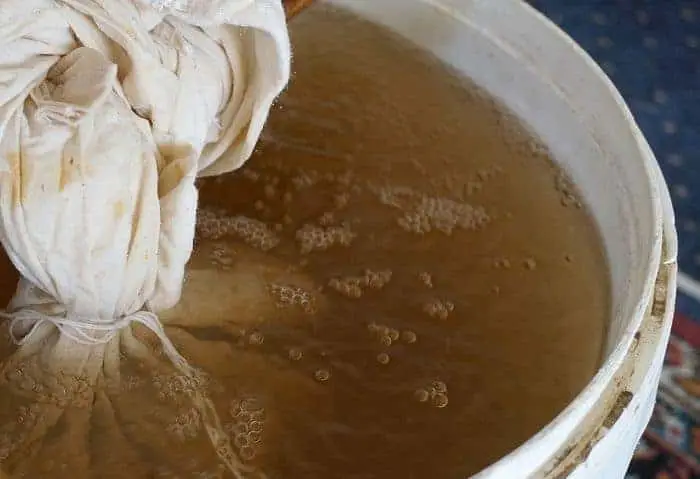
Compost tea, despite its name, is not something you’d want to sip on a lazy afternoon.
It is, however, a fantastic way to provide a quick nutrient boost to your plants.
To make compost tea, you’ll need a bucket (a 5-gallon bucket works well), some of your compost, and water.
Fill about one-third of the bucket with compost, then top it up with water. Let the mixture steep for a few days, stirring it occasionally.
Once your tea is ready, strain it and use it to water your plants.
Compost tea is gentle on plants and can be used regularly throughout the growing season.
It’s especially beneficial for container plants that need a quick pick-me-up or when you’re preparing new garden beds.
So there you have it! Whether you’re mixing it into your potting soil, side dressing, or brewing up a batch of compost tea, using compost in your container garden is a good choice.
With a little compost and some TLC, your container garden will be thriving in no time.
Using Compost in Container Gardens FAQs
Alright, so we’ve taken a deep dive into the ins and outs of composting for container gardens, haven’t we?
But I bet there are still a few burning questions niggling at the back of your mind. Maybe you’re wondering about the best time to add compost or if you can use too much of it.
Well, you’ve come to the right section! It’s time for some FAQs – where I’ll try to quench your compost-related curiosities.
So, without further ado, let’s dive into the questions that compost-loving gardeners like you often ask. Let’s get those queries cleared up!
Q: Is compost good for container gardening?
A: Absolutely! Compost is a fantastic soil amendment for container gardening.
It enriches the soil with nutrients, improves its structure, and enhances water retention.
Compost also introduces beneficial microorganisms that boost plant health and growth.
So, yes, it’s a big thumbs up for compost in container gardening!
Q: Should I mix compost with potting mix?
A: Indeed, you should! Mixing compost into your potting mix is a great way to enrich it with nutrients and beneficial microbes.
A good mix ratio would be about one-third compost to two-thirds potting soil.
This creates a nutrient-dense and well-draining growing medium for your container plants.
Q: Can I just put compost on top of soil?
A: Yes, you can. This is called side dressing. You can add a layer of compost on top of the soil around your plants.
As you water or when it rains, the nutrients will seep down into the root zone, providing a slow and steady supply of nutrients.
Q: Is compost good for potted plants?
A: Absolutely! Compost provides a host of benefits for potted plants, from improving soil structure to providing a rich source of nutrients.
Whether mixed into the soil or used as a top dressing, compost can help your potted plants thrive.
Q: Can too much compost hurt plants?
A: Like most good things, compost is best used in moderation.
While it’s a wonderful source of nutrients, too much compost can lead to nutrient imbalances and can make the soil too dense for some plants.
It’s usually a good idea to mix compost with potting soil, rather than using it straight, especially for container plants.
Q: Is compost better than potting soil?
A: Compost and potting soil serve different purposes and work best when used together.
Potting soil provides the basic structure and volume needed for plant roots, while compost enriches the soil with nutrients and beneficial microorganisms.
So, one is not necessarily better than the other, but they complement each other well.
Q: Can compost be used in containers and indoor house plants?
A: Yes, compost can be used for both containers and indoor house plants.
It can be mixed into the potting soil or used as a top dressing to provide a nutrient boost.
However, it’s best to use well-composted material, as unfinished compost can attract pests, especially indoors.
Q: How to refresh compost in pots?
A: To refresh compost in pots, you can simply add a new layer of compost on top of the existing soil.
If the pot is overcrowded or the soil level has sunk, you may want to remove some of the old soil and replace it with a mix of fresh potting soil and compost.
Q: What not to put in compost to avoid a contaminated bin?
A: To avoid a contaminated bin, refrain from composting diseased plants, weed seeds, chemically-treated wood, meat, dairy, and pet waste.
These materials can either slow down the composting process, attract pests, or introduce harmful pathogens to your compost.
Q: Should you add worms to your compost bin?
A: If you’re doing vermicomposting (composting with worms), then yes, adding worms – particularly red wigglers – can be beneficial.
They speed up the decomposition process and produce nutrient-rich worm castings.
However, for traditional compost bins that heat up significantly, adding worms isn’t necessary as the heat can be harmful to them.
Composting in Container Gardens Conclusion
Wow, what a journey we’ve had through the world of composting for container gardening.
We’ve learned so much, from the why’s to the hows, and everything in between. But alas, like all good things, our little composting adventure has to come to an end.
Whether you’re a seasoned gardener or a green-thumbed beginner, I hope you’ve found this guide helpful.
But before we wrap things up and send you off to create that compost gold, let’s take a moment to summarize and reflect on all the composting wisdom we’ve unearthed together.
Let’s bring this home, my composting companions!
Recap of the Importance of Composting in Container Gardening
So, let’s take a quick trip down memory lane, shall we?
Remember when we talked about how composting is essentially nature’s recycling system?
A way to take our organic waste, think kitchen scraps, yard debris, and vegetable scraps, and turn it into something that our container plants will love. Well, that’s just the tip of the compost heap!
In our journey together, we’ve learned that compost is much more than just decomposed organic material.
It’s a rich, nutrient-packed soil amendment that can transform the soil in your container garden.
Remember how we discussed that adding compost improves soil structure, enhancing its ability to retain the right amount of water and air?
And let’s not forget those beneficial microbes that make a home in well-composted material and work tirelessly to keep your plants healthy and strong.
We’ve also seen how composting plays a crucial role in environmental sustainability, reducing waste and nourishing the soil in a way that chemical fertilizers simply can’t match.
In essence, composting is not just a good idea, but perhaps the best way to care for your container garden.
Encouragement for Readers to Start Composting
And now, to all you gardening enthusiasts reading this, I want to share a few words of encouragement.
You see, composting might seem a bit daunting at first. I get it. You’re dealing with decomposing organic matter, after all.
But believe me when I say, it’s worth every bit of effort you put into it.
Take it from me, a composting advocate and many gardeners around the world composting is a delightful journey that brings you closer to nature and your garden.
It doesn’t matter if you’re living in a small space with just a few indoor plants or managing a large collection of container plants on your patio. There’s always room for composting!
So, what do you say? Are you ready to make your own compost and provide your plants with the best soil they’ve ever seen?
Remember, every journey starts with a single step, and maybe, the first step towards a healthier, more vibrant container garden is just a compost bin away.
Let’s turn our waste into wonders, one compost pile at a time!







